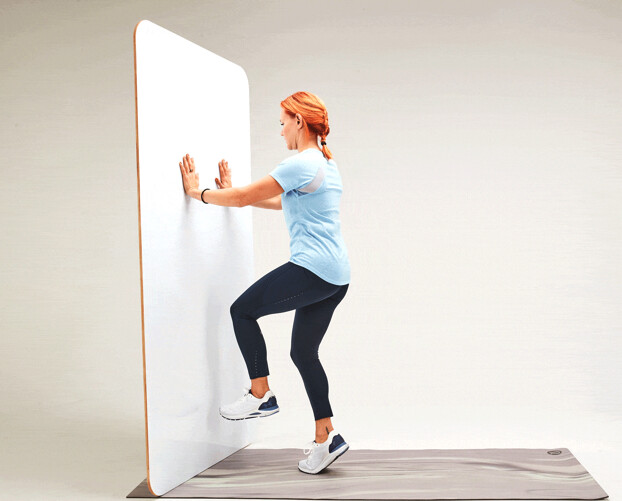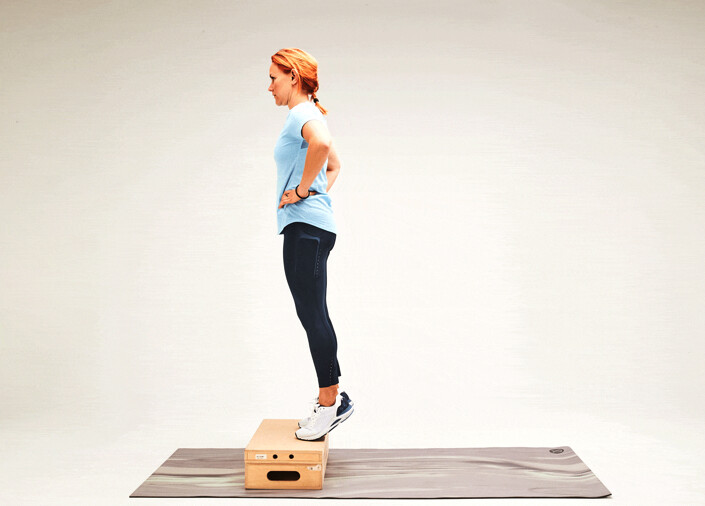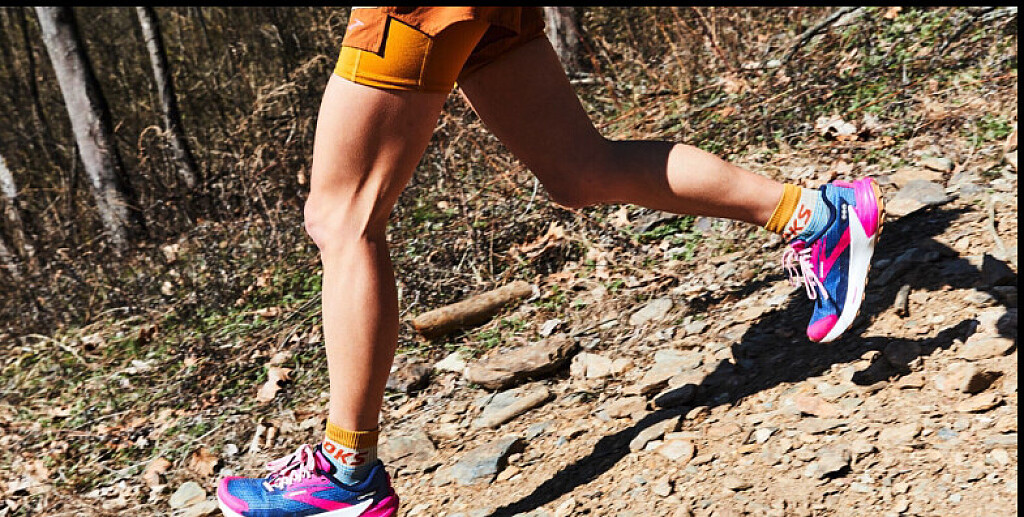Running News Daily
Running News Daily is edited by Bob Anderson. Send your news items to bob@mybestruns.com Advertising opportunities available. Train the Kenyan Way at KATA Kenya and Portugal owned and operated by Bob Anderson. Be sure to catch our movie A Long Run the movie KATA Running Camps and KATA Potato Farms - 31 now open in Kenya! https://kata.ke/
Index to Daily Posts · Sign Up For Updates · Run The World Feed
The Best Methods for Treating Your Tight Calves
Surprise: You don’t need to do a ton of stretches.
Most runners are familiar with the sensation of tight calves—that achy, stiff feeling that lingers in the back of your lower leg any time you take a step.


“The feeling of tight calves is pretty common amongst any sort of runner level—anywhere from beginner to ultra distance,” physical therapist Brad Whitley, P.T., D.P.T., cofounder of Bespoke Treatments in San Diego, tells Runner’s World.
That’s because the calves (specifically, the soleus, the lower part of your calf muscle) is the powerhouse of running, Whitley explains. Every time you take a step, the calves work hard to propel you forward. Considering most of us take more than 1,000 steps per mile, it’s no wonder these muscles can feel the effects of all that effort.
When tight calves strike, your natural response may be to bust out a series of calf stretches or reach for the nearest foam roller. But that’s not always the best remedy.
“Oftentimes, a tight calf is barking at you because it is weak and overworked,” physical therapist Anh Bui, P.T., D.P.T., C.S.C.S., certified strength and conditioning specialist and certified run coach in Oakland, California tells Runner’s World. “The solution is not to constantly stretch it, but to strengthen it so we increase the tissue capacity to withstand high loads,” she explains.
Treating tight calves is important, because running through them can cause discomfort and increase the risk of lower leg injury, Bui explains. “Runners who constantly overuse their calf muscles, instead of glutes and hamstrings, to aid in the push-off phase of running will have higher risk of shin splints, achilles tendonitis, and calf strains,” she says.
To help you better treat tight calves, we asked Whitley and Bui for a rundown of what causes this muscle group to feel stiff in the first place and the best ways to alleviate that sensation for good. Here’s what you need to know.
5 Main Causes of Tight Calves
1. Lack of Strength
Perhaps the most common cause of tight calves is a lack of strength in the calf muscles, the gastroc and soleus. “Most runners that experience tight calves haven’t built enough strength in their calves to meet the demands of running,” explains Bui. “The calf muscles play a critical role in shock absorption when we land, and also produce power during the push-off phase or running to propel you forward. When the muscle isn’t strong enough and we overload it with repetitive activity, it’s likely to feel tight.”
2. Overworked Muscles
Some runners have enough strength in their calves, but they don’t allow themselves enough downtime to recover in between workouts or races, which can leave the calves feeling stiff and achy. “Under-recovered muscles can often cause that feeling of tightness,” says Whitely, explaining that in his experience, this is typically the second most common cause of tight-feeling calves.
3. An Anterior Pelvic Tilt
Runners who maintain an anterior pelvic tilt—meaning, their pelvis is tipped forward as they stride, rather than in the ideal neutral position, causing an arch in the low spine—inhibit their glute muscles from firing, which then causes the calves to overcompensate, explains Bui. The end result? You guessed it: Tight calves.
To determine if your calf tightness might be caused by an anterior pelvic tilt, observe your natural posture throughout the day, says Bui. “Do you tend to stand with your low back arched or hyperextended? Do you sit at your desk with your low back arched?” she asks. “Your spine should ideally stay in a neutral position, not too rounded and not too arched.”
4. Limited Range of Motion in the Feet and Ankles
Athletes with limited range of motion in the feet and ankles may have tight-feeling calves as a result. That’s because “muscles attach to tendons, which then attach to bone,” explains Bui. “If a joint is stiff, restricted, and can’t move with full range of motion, the forces get translated to the tendons and muscles, which get worked harder than they should be.”
5. Dehydration, Deficiencies, and Lack of Sleep
Not intaking enough fluids, lacking electrolytes and minerals that help with cramping or tightness (like sodium and magnesium), and even skimping on sleep can all contribute to calf tightness, says Whitley. Central nervous system fatigue, triggered by lack of sleep, can “cause some tightness in the posterior chain,” explains Whitley—which yep, includes the calves.
6 Ways to Treat Tight Calves
1. Incorporate Strength Exercises
Because calf tightness is caused by weak calves, strengthening these muscles can help alleviate stiffness by addressing the underlying issue. As Whitely puts it, unless your calf tightness is caused by overtraining, “doing some strengthening exercises tends to be the lowest hanging fruit.”
Here are calf-strengthening exercises Whitley and Bui recommend. Bonus: The eccentric calf raise does double duty by strengthening and stretching the calves.
➥ Bent Knee Calf Raise With Forward Lean
Stand tall, facing a wall. Place hands on the wall at shoulder height, elbows straight, fingertips at eye level.
Lean forward from ankles, keeping head, neck, and spine in a neutral position.
From here, lift left leg up and bend that knee 90 degrees.
Holding this position, raise up onto right toes
Lower back down.
Repeat. Do 2 sets of 15 reps, 2-3 times a week.
➥ Eccentric Calf Raise
Stand with heels off the edge of a step and come up onto toes of both feet.
Then, lift left foot off step and stand on just right foot. Slowly lower right heel past the edge of the step for a count of five.
Place left foot down to come up onto toes with both feet again
Repeat. Do 2-3 sets of 15 reps, 2-3 times a week.
➥ Single-Leg Calf Raise Progression
This progression involves five different exercises. Start with the first, and aim for 3 to 5 sets of about 15 to 20 reps per side (or as many is needed to really challenge your muscles). If you’re doing the exercises before a run, reduce the volume slightly, says Whitley, who suggests doing just 3 sets per side. Once you can do multiple sets of 15 to 20 reps without cramping or fatiguing, move onto the next exercise in the series.
Single-Leg Calf Raise: Stand on flat ground, lift one leg up, and do a single-leg calf raise on the other leg by pressing up onto toes.
Single-Leg Calf Raise on Decline Board: Perform the exercise described above on top of a decline board where heel drops slightly below toes.
Single-Leg Pogo Jump: Stand on one leg and hop up and down, landing and pushing off on just the toes.
Single-Leg Pogo Line Hop: Pogo hop on one leg forward and backward over a line, and then side to side over a line.
Single-Leg Pogo Hop Continuous Motion: Pogo hop on one leg forward continuously, and pogo hop laterally continuously.
2. Check Your Ankle Dorsiflexion
Because limited range of motion in the ankles can contribute to tight calves, do a quick test to determine if you suffer from stiff ankles. Specifically, test your ankle dorsiflexion with a wall test:
Stand in a staggered stance with left foot positioned a fist width’s distance from the wall. Place both hands on the wall for support.
Drive left knee forward and try to tap the wall, holding for 3 seconds, while keeping heel on the ground.
If you can’t pass this test, perform the test regularly as an exercise to improve ankle dorsiflexion range of motion. Aim for 20 reps, and do this before any run.
3. Practice Pelvic Tilts
Doing pelvic tilts regularly can help you learn what a neutral pelvic position should feel like and thus reduce calf tightness caused by an anterior tilt.
Sit tall in a chair with back slightly arched. This is the starting position.
Pull belly button in towards spine, tilting pelvis backwards and flattening spine.
Hold for a few moments, then return to starting position, arching back.
Aim for 15 reps, 2-3 times a week, or even everyday if you want to practice more often, says Bui.
4. Roll Out Your Calves
Regardless of what’s causing your tight calves, spending a few minutes rolling out these muscles with a foam roller or lacrosse ball can help alleviate the sensation of tightness, says Bui. Aim for two minutes of rolling after every run.
Just keep in mind: Though lengthening your calves with foam rolling and stretches can create create a short-term neurological effect to reduce that tightness, “it doesn't necessarily attack the root cause,” says Whitely, which is why you probably don’t want to rely on this as your only balm for tight calves.
5. Boost Blood Flow to the Calves
If your calves are stiff because they’re under-recovered, focus on increasing blood flow to the area to help loosen feelings of tightness. This could include getting bodywork done by a masseuse or physical therapist; self-massaging with a foam roller, mobility stick, or lacrosse ball; or doing an ice bath or cold plunge.
Be sure to also take an honest look at your training volume to understand why your body is under-recovered, says Whitley. For example, did you just run a marathon and then immediately go back to another 60-mile training week without giving your body a break?
Identifying these overtraining errors can help you avoid similar mistakes in the future. On the topic of adequate recovery, make sure you’re also staying on top of your hydration and getting plenty of sleep.
6. See a Physical Therapist
If your tight calves don’t go away within two weeks, despite your best efforts to solve the issue yourself, consider seeing a physical therapist, says Whitely. Chances are, they can help diagnose and fix your tight calves more efficiently than you can on your own.
by Runner’s World
Login to leave a comment




